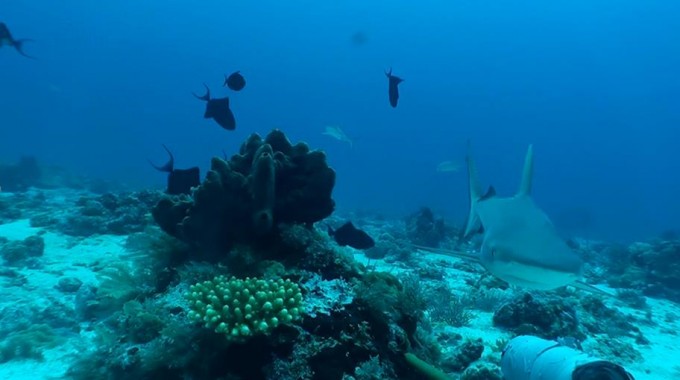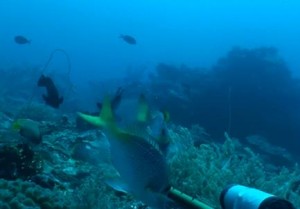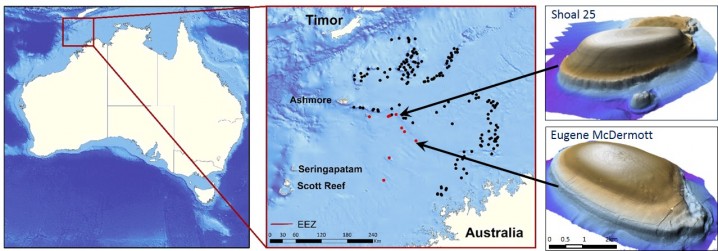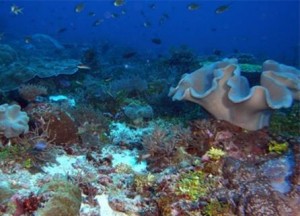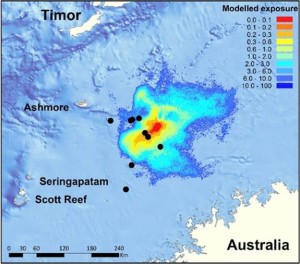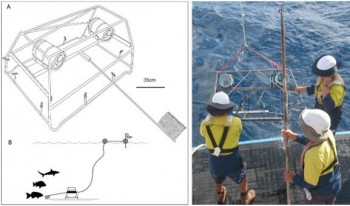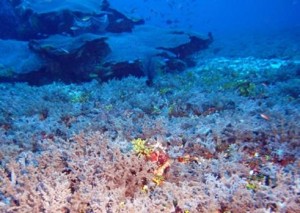Hidden reefs and biodiversity hotspots
Australia’s north west oceanic shoals found to support exceptional species richness.
Exceptional diversity
Research conducted by the Australian Institute of Marine Science (AIMS) has revealed exceptional fish diversity for the little known north west oceanic shoals. The abundance and number of species recorded, using baited underwater video surveys, rival that found on equivalent features in the Great Barrier Reef. Species richness was found to be between 1.25 to 3 times higher than equivalent banks, shoals and reef edges in the Great Barrier Reef Marine Park (GBRMP). The scientists suggest this may be because the north west shoals are exposed to oceanic influences and associated processes while the GBRMP shoals are less exposed being located within the confines (lagoon) of a barrier reef. The greater exposure of the shoals may be enhancing productivity and in turn the abundance and diversity of species inhabiting them.
Threatening processes
This remote region represents some of the world’s most pristine and biologically diverse ecosystems, while also supporting major oil and gas infrastructure and commercial fisheries. Therefore, in addition to threats imposed by climate change and variability it is also prone to ongoing threatening processes from the petroleum and fishing industries. On the 21st of August in 2009 an uncontrolled release at the Montara well head resulted in a 74 day spill of oil and gas into the Timor Sea. The incident triggered scientific monitoring of the key habitat and communities in the region including the emergent oceanic reefs and submerged banks and shoals. It was this intensive post spill monitoring and research that revealed the biological significance of the shoals.
Hidden underwater oases
So what are the oceanic shoals? They are abrupt geological features rising from the deep continental shelf (around 200 metres to within 15-50 metres from the surface. Never actually breaking the surface, these unique and remote underwater communities have in the past gone unnoticed. However, this research found these submerged reefs to support very diverse coral reef ecosystems with many of the same species found on the emergent reefs in the region. Therefore, it is possible that these hidden reefs may not only provide refuge from warming events but also act as important stepping stones for enhanced biological connectivity of Australia’s northwest.
Managing Threats
With no pre-existing baseline data, effects on the marine communities within the region was difficult to detect. Instead the research looked to examine patterns in the fish community across the exposure gradient. Nine shoals were surveyed across the oil spill exposure gradient using baited remote underwater video systems (BRUVS). The research found that, while these results do not exclude a potential effect of oil exposure on the fish communities, the observed variations between shoals appeared to be dominated by natural processes.
Baited video ‘fishing’
The advantage of video ‘fishing’ is that it is a safe and non-destructive survey technique that provides accurate fish identification, size and abundance measures. Fish assemblages can be surveyed quickly and safely enabling researches to survey fish populations without entering the water thereby avoiding the risk of exposure to oil and dispersants and enabling researchers to survey beyond the depths accessible to SCUBA divers (> 30 metres). The camera systems were lowered to the seafloor and left to record for an hour before retrieval and then sent for analysis back in the laboratory. A total of 248 underwater video deployments from all nine shoals recorded 338 species of fishes, sharks, rays and sea snakes.
Lessons learned
Important lessons were learned from the Montara oil spill. The biggest lesson was the need for adequate baseline data. Without solid information on the marine communities represented (i.e. the species present, their distributions, abundances and dynamics) any changes in the system cannot easily be attributed to natural versus anthropogenic activities. Having established that these hidden reefs support some exceptionally diverse marine communities it is important that we have a good understanding of their natural dynamics to ensure they are protected and well managed into the future.
For more information please follow this link to the full research report.







